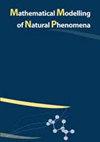非马尔科维奇模型强调年龄结构对新冠肺炎流行病学动态的重要性
IF 2.1
4区 数学
Q2 MATHEMATICAL & COMPUTATIONAL BIOLOGY
引用次数: 9
摘要
新冠肺炎爆发后,进行了大量的建模研究,以迅速获得见解,实施最佳公共卫生政策。这些分区模型大多涉及常微分方程(ODEs)系统。这种形式主义隐含地假设在每个隔间中花费的时间并不取决于已经在其中花费的时间,这是不现实的。为了克服这个“无记忆”问题,一个广泛使用的解决方案是将一个独特现实的隔间的数量连锁起来(例如,感染者在几个隔间之间移动)。这允许更大的异质性,但也往往使整个模型更难理解和参数化。我们开发了一种基于偏微分方程(PDE)而非常微分方程的非马尔可夫替代形式,通过构造,它为每个隔间提供了一个记忆结构。我们将我们的模型应用于法国2021年严重急性呼吸系统综合征冠状病毒2型疫情,并确定导致新冠肺炎住院的主要成分。全球敏感性分析强调了年龄结构接触矩阵带来的巨大不确定性。我们的研究显示了PDE形式主义在捕捉国家新冠肺炎动态方面的灵活性和稳健性,并为研究涉及免疫减弱或病毒进化的中长期情景开辟了前景。本文章由计算机程序翻译,如有差异,请以英文原文为准。
Non-Markovian modelling highlights the importance of age structure on Covid-19 epidemiological dynamics
The Covid-19 outbreak was followed by a huge amount of modelling studies in order to rapidly gain insights to implement the best public health policies. Most of these compartmental models involved ordinary differential equations (ODEs) systems. Such a formalism implicitly assumes that the time spent in each compartment does not depend on the time already spent in it, which is unrealistic. To overcome this “memoryless” issue, a widely used solution is to chain the number of compartments of a unique reality (e.g. have infected individual move between several compartments). This allows for greater heterogeneity, but also tends to make the whole model more difficult to apprehend and parameterize. We develop a non-Markovian alternative formalism based on partial differential equations (PDEs) instead of ODEs, which, by construction, provides a memory structure for each compartment. We apply our model to the French 2021 SARS-CoV-2 epidemic and we determine the major components that contributed to the Covid-19 hospital admissions. A global sensitivity analysis highlights a huge uncertainty attributable to the age-structured contact matrix. Our study shows the flexibility and robustness of PDE formalism to capture national COVID-19 dynamics and opens perspectives to study medium or long-term scenarios involving immune waning or virus evolution.
求助全文
通过发布文献求助,成功后即可免费获取论文全文。
去求助
来源期刊

Mathematical Modelling of Natural Phenomena
MATHEMATICAL & COMPUTATIONAL BIOLOGY-MATHEMATICS, INTERDISCIPLINARY APPLICATIONS
CiteScore
5.20
自引率
0.00%
发文量
46
审稿时长
6-12 weeks
期刊介绍:
The Mathematical Modelling of Natural Phenomena (MMNP) is an international research journal, which publishes top-level original and review papers, short communications and proceedings on mathematical modelling in biology, medicine, chemistry, physics, and other areas. The scope of the journal is devoted to mathematical modelling with sufficiently advanced model, and the works studying mainly the existence and stability of stationary points of ODE systems are not considered. The scope of the journal also includes applied mathematics and mathematical analysis in the context of its applications to the real world problems. The journal is essentially functioning on the basis of topical issues representing active areas of research. Each topical issue has its own editorial board. The authors are invited to submit papers to the announced issues or to suggest new issues.
Journal publishes research articles and reviews within the whole field of mathematical modelling, and it will continue to provide information on the latest trends and developments in this ever-expanding subject.
 求助内容:
求助内容: 应助结果提醒方式:
应助结果提醒方式:


